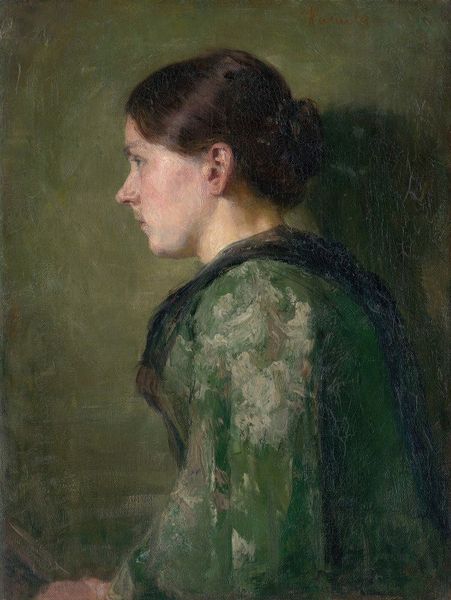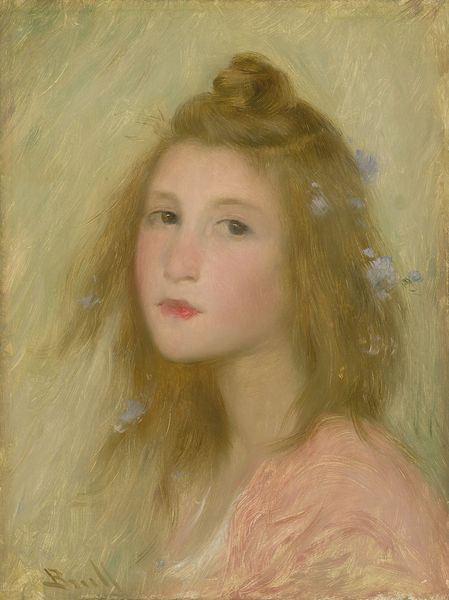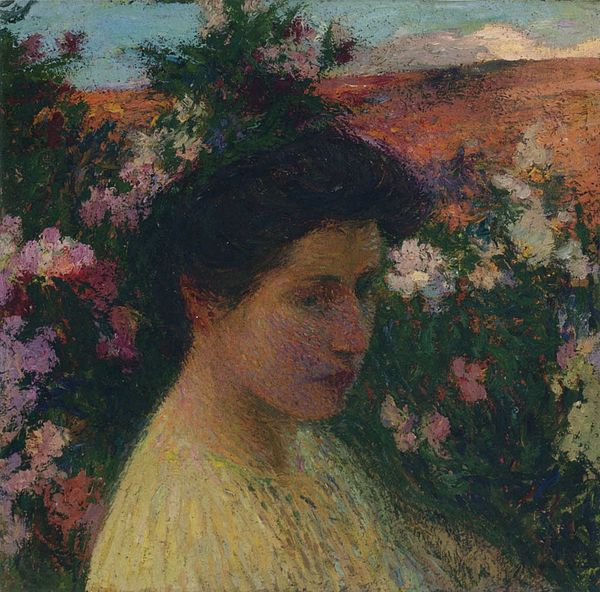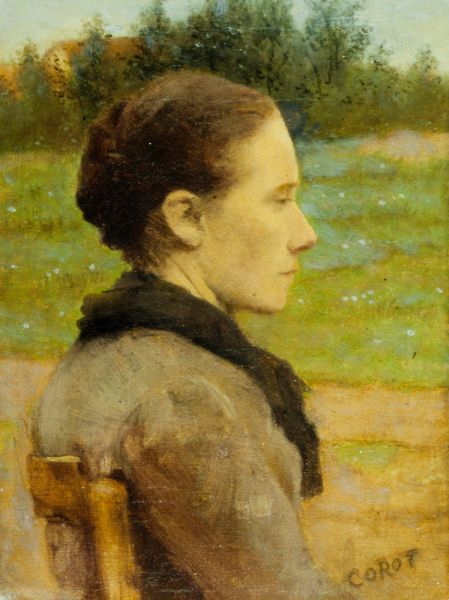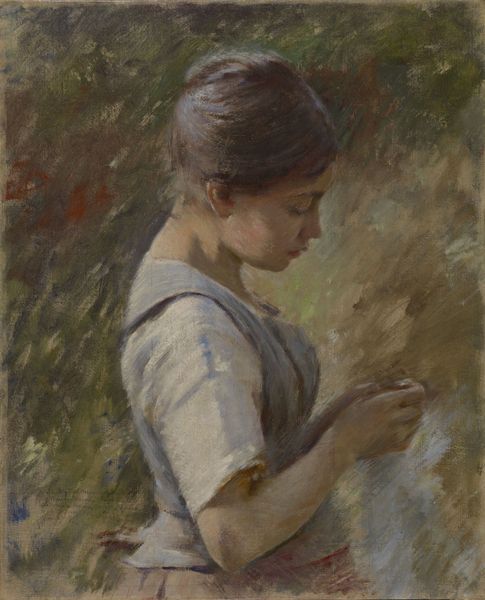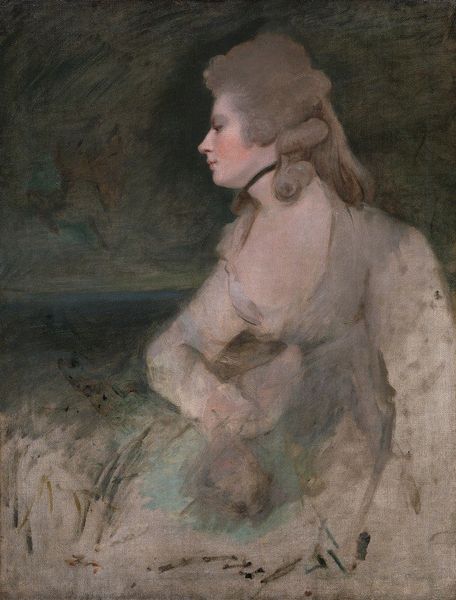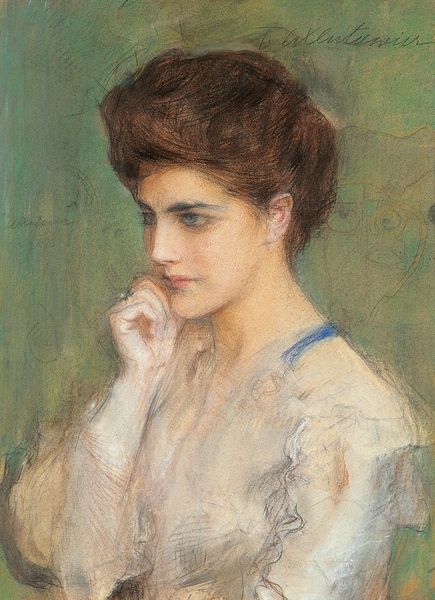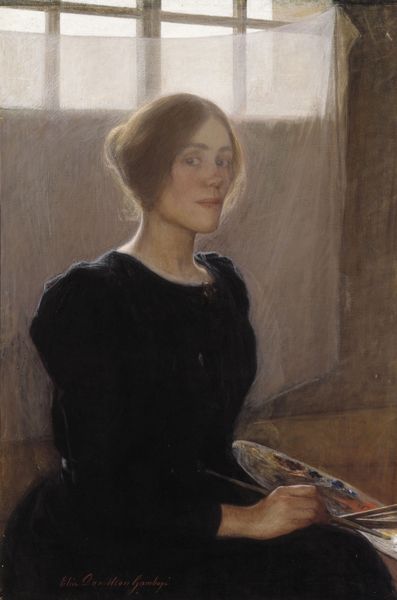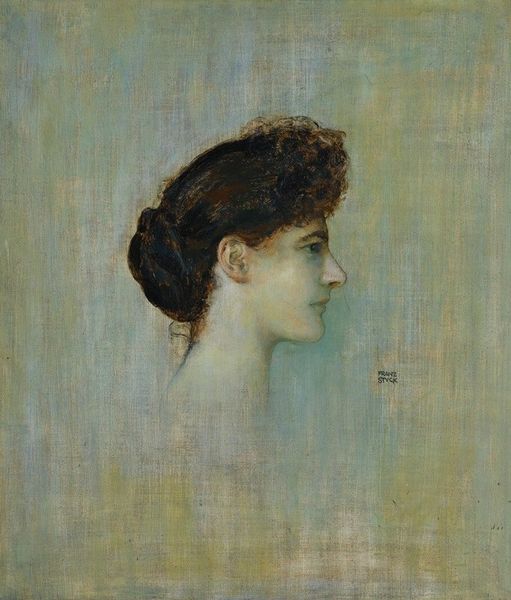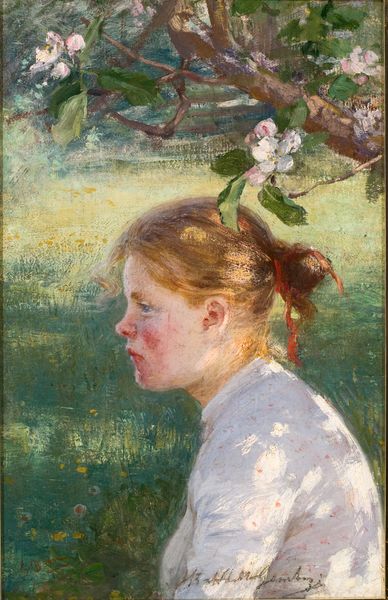
Copyright: Public domain
Editor: So, this is "Rosalia," an oil painting from 1894 by Joan Brull. It's a simple portrait, but the textures in the painting almost feel sculpted. What's your take on this? Curator: Well, it's important to consider the oil paint itself. Notice the visible brushstrokes. Brull isn't trying to hide the process of applying paint to canvas; he's embracing it. That materiality is crucial. Oil paint at the time was becoming increasingly industrialized, but here, the artist's hand is evident, even celebrated. How might that relate to debates about craft versus industry at the turn of the century? Editor: That's a great point. The visible brushstrokes remind me of craft, hand-made versus mass-produced. Was there a particular significance to choosing oil paints at that time, compared to, say, other materials? Curator: Absolutely. Oil paint had become readily available and relatively affordable through industrial processes, leading to increased artistic production. This shift transformed the art market. Who could afford art, who could produce art, what defined value? All up for grabs, to some extent. And how does Brull’s technique challenge academic portraiture that prized smooth surfaces and invisibility of the artistic hand? Editor: I never thought about how accessible materials would affect who gets to make art and what art even is. That connection between material access, artistic technique and social change makes me appreciate Brull’s work much more. Curator: Precisely! By examining the material conditions of its production and reception, we can see how this seemingly straightforward portrait reflects much larger cultural and economic shifts.
Comments
No comments
Be the first to comment and join the conversation on the ultimate creative platform.
